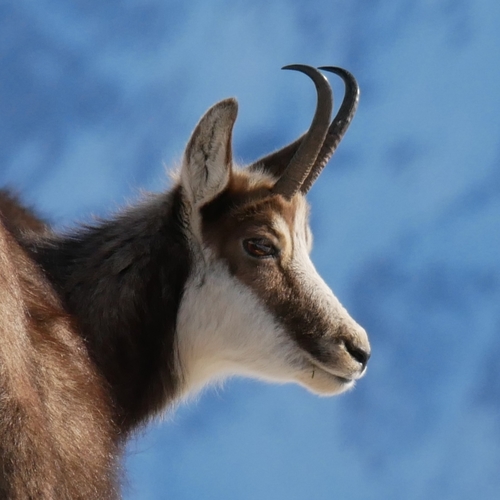
Chamois
The chamois, with its striking facial markings and agile movements, thrives in Europe's mountain ranges. Known for their nimbleness, these goat-antelopes leap effortlessly across rocky landscapes, playing a vital role in their alpine ecosystem as both grazers and prey.
18-22 years
Lifespan
50.0 - 55.0 kg
Weight
Height: 75 - 80 cm
Size
Brown, Grey, Black, White, Tan
Color
10 mph
Top Speed
Least Concern
Conservation Status
Stable
Population Trend
Characteristics
Rupicapra rupicapra, commonly known as the chamois, is a species of goat-antelope native to European mountains. It has a stocky build, with a distinctive white face, and black stripes extending from its eyes down to its nose. Chamois are agile climbers, adept at navigating rocky terrains, and are known for their ability to leap across steep cliffs with ease. They primarily inhabit alpine meadows and forests and are most active during dawn and dusk.
Distribution Range of the Chamois
Rupicapra rupicapra, commonly known as the Alpine chamois, is native to the mountainous regions of Europe. It is primarily found in the Alps, Carpathians, Tatras, Balkans, and parts of the Apennines. Its range extends through countries such as France, Switzerland, Austria, Italy, Germany, Poland, Slovakia, Romania, and the Balkan states.
Chamois's Habitat
Environmental Conditions
The Alpine chamois inhabits alpine and subalpine environments, typically found at elevations ranging from 800 to 2,800 meters. Its habitat is characterized by rugged mountainous terrain with rocky outcrops, steep slopes, and sparse vegetation. The climate in these regions is generally cold, with significant snowfall in winter and moderate to cool temperatures in summer.
Ecological Niche
Rupicapra rupicapra is well-adapted to life in high-altitude environments, where it occupies an ecological niche as a browser and grazer. It primarily feeds on grasses, herbs, and shrubs, but its diet can vary seasonally. The species is known for its agility and ability to navigate steep and rocky terrain, which helps it evade predators such as wolves and lynxes. The chamois' habitat preferences and dietary habits allow it to thrive in areas with limited resources, often competing with other herbivores like ibex and deer.
Copyright @ Nature Style Limited. All Rights Reserved.
 English
English